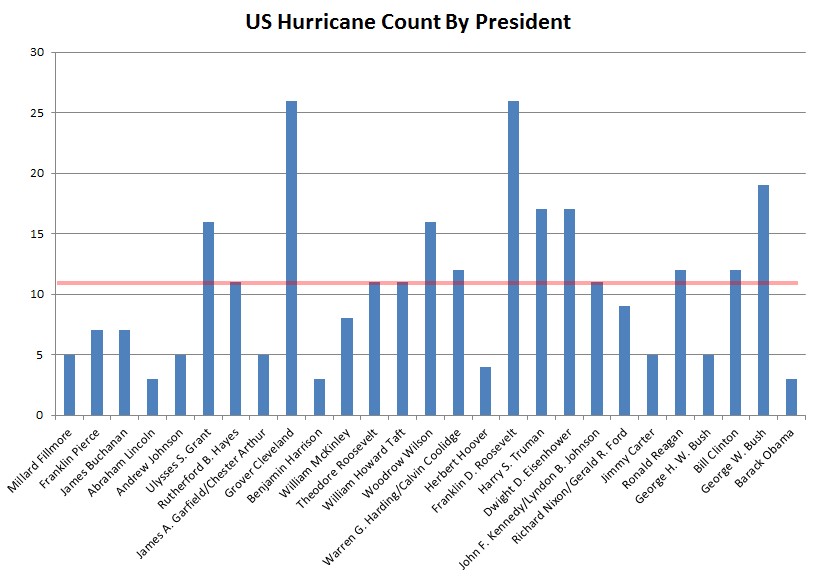By most any metric, number of landfalling hurricanes, number of intense hurricanes (>cat 3) etc. the entire U.S. has had remarkably benign tropical cyclone activity for the last seven years.
It is so remarkable that we joke around and point to an event in 2008:
"...this was the moment when the rise of the oceans began to slow and our planet began to heal..."
-then-Senator Obama at the end of his Democratic nomination victory speech

Florida has gone 3,270 days without a hurricane – nearly nine years and, by far, the longest stretch on record (the next longest streak is 5 seasons from 1980-1984, in records dating back to 1851). Meanwhile, the Sunshine state’s population and development have boomed.
Florida is long overdue for a destructive hurricane and has never had so many people and so much property in the way. This dangerous state of affairs is compounded by the potential for complacency and lack of recent experience. When hurricanes don’t strike over such a long period of time, some people may be lulled into a false sense of security and/or forget how horrible hurricanes can be.
And then there are newcomer Floridians who haven’t ever had to endure a hurricane. Weather.com notes that more than 1 million people have moved to Florida since Wilma in 2005, the last hurricane to hit the state. “That’s potentially 1 million people who are inexperienced with the impacts of hurricanes and tropical storms and lack the experience boarding up a home, cleaning out a flooded home or battling mandatory evacuation traffic,” Weather.com writes.
It’s not a matter of if but when an active cycle of hurricanes returns to Florida. In 2004 and 2005 alone, seven hurricanes hit (Charley, Frances, Jeanne, and Ivan in 2004; Dennis, Katrina, and Wilma in 2005.).
South Florida, in particular, is a sitting duck. The population there has skyrocketed, putting more people and more assets at risk. Slate’s Eric Holthaus notes a major hurricane hasn’t directly struck South Florida since Andrew in 1992 and that the economy has exploded ever since. “According to the OECD (PDF), Miami now has the largest exposed coastal assets of any city in the world,” Holthaus writes.HT: The Big Picture
The Palm Beach Post reported that if the 1926 hurricane, Miami’s strongest on record, hit today, the damage would total $125 billion (in 2012 dollars) – exceeding Katrina, according to the Boston-based risk management consultants Karen Clark & Co.
Roger Pielke Jr., a professor of environmental studies at the University of Colorado, surmises the toll would be even worse. “We estimate … that the 1926 Miami storm would result in more than $180 billion in damage were it to hit in 2014,” he wrote in op-ed in USA Today....MORE